- AI

Artificial Intelligence

Smart Products & Services
We follow Smart Products & Services

Intelligent Business Functions & Processes
We follow Intelligent Business Functions & Processes

Robotic Process Automation
We follow Robotic Process Automation

Personalized
healthcareWe follow Personalized healthcare

Identifying at-risk patients
We follow Identifying at-risk patients

Optimized routing and scheduling
We follow Optimized routing and scheduling
- ML

Machine Learning

Predictive
AnalyticsWe follow Predictive Analytics

Service Personalization
We follow Service Personalization

NLP
We follow NLP (Natural Language Processing)

Stock Market Forecasting
We follow Stock Market Forecasting

Fraud Prevention
We follow Fraud Prevention

Recommender engines
We follow Recommender engines
- blockchain
- IOT

Internet of Things
- AR
- Business Solutions

Business Solution

Business Performance Management
We follow Business Performance Management

Decision Making & Big Data Analytics
We follow Decision Making & Big Data Analytics

Enterprise Data Management
We follow Enterprise Data Management
- Apps

Apps

Native Apps
We follow Native Apps

Cross Platform Apps
We follow Cross Platform Apps

Web Apps
We follow Web Apps

Hybrid Apps
We follow Hybrid Apps

Cloud Native Apps
We follow Cloud Native Apps
- Lab
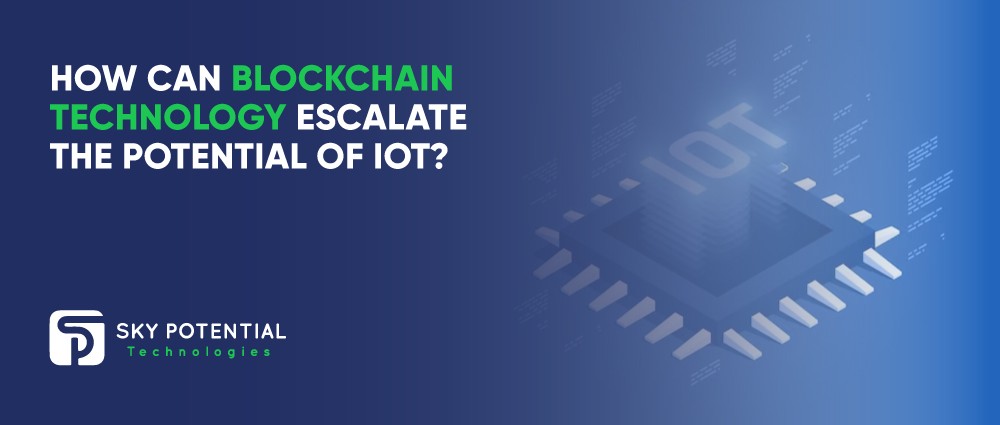
How Can Blockchain Technology Escalate the Potential of IoT?
Security concerns, a key challenge, have loaded IoT’s widespread deployment. IoT devices often have security flaws that make them easy targets for Distributed Denial of Service (DDoS) attacks.
Therefore, here in this blog by Sky Potentials, the top blockchain app development company, and provider of the best IoT technology strategy, will explain some blockchain-related concerns for IoT: How Blockchain Can Support Accelerate IoT, blockchain and IoT use cases, factors to be aware of when executing the blockchain in IoT and some IoT and Blockchain Integration Challenges. Let’s dive into it.
HowCan Support Accelerate IoT?
Blockchain or distributed ledger technology could support IoT to solve scalability and security issues, and addressing these issues can accelerate IoT adoption. So here are the pros of it.
1. Decentralised Networking
The existing IoT technology is very centralised, which means that every device in the network is incredibly dependant on the centralised node, making it less efficient and having a high maintenance cost. Hence, as an alternative to this, we can use the blockchain network, which is profoundly Decentralised. By doing so, the devices become less dependant on other nodes in the Decentralised network.
Due to its Decentralised approach, the IoT network will address many current issues using standardised peer-to-peer communication models to process hundreds of billions of transactions among the devices. It dramatically lowers the cost of setting up and maintaining a sizable centralised data centre.
2. Tamper Resistant
In a blockchain system, the distributed ledger is tamper-proof, eliminating the need for trust between the people involved and giving the devices and platforms the security they need to improve user experience and simplify things. Thus, only some companies can manage the enormous volume of data produced by IoT devices.
3. Integrity And Assurance

Blockchain can help IoT organisations cut expenses by eliminating processing costs associated with IoT gateways by giving a mechanism to foster trust among the stakeholders (e.g. traditional protocol, communication overhead costs or hardware cost). Blockchain technology also guarantees that the procedures and data that occur in the database are clearly defined. For the blockchain network to make it simple to find the necessary data
4. Autonomy
The IoT and blockchain network combination enables device communication without many servers. It will also guard against any network node failure that could bring the entire system to an end.
5. Transparency
Blockchain promotes transparency by allowing anybody with authorisation to access the network to view a history of all previous transactions. This could enable reliable communications between the IoT network’s device nodes. It offers a reliable method for locating any data leaks’ precise source to take prompt corrective action. This IoT and blockchain paradigm ensures the validity of messages exchanged between corruptions by treating them similarly to financial transactions in the bitcoin network.
6. Strengthened Degree In Encryption
By using blockchain to store IoT data, security becomes strong since; to access the network, hackers would have to update nearly every block of the chain. It is almost impossible to replace existing data records using blockchain since it offers a considerably more robust level of encryption.
Blockchain And IoT Use Cases
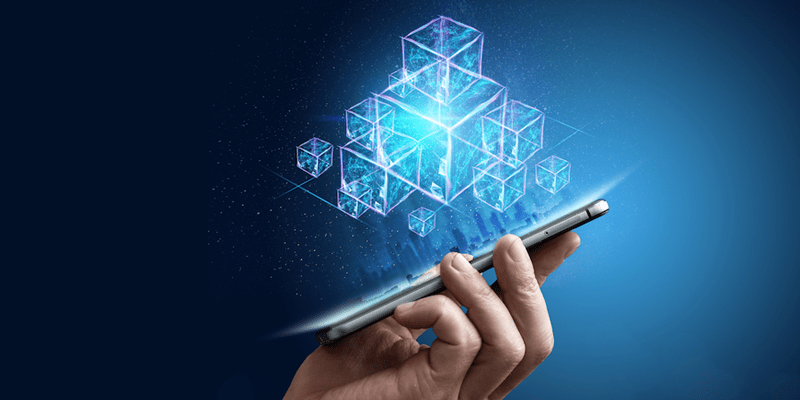
A marketplace of linked devices and the ability for businesses to profit from the data gathered both stand to benefit significantly from the marriage of blockchain and IoT. Here are some use cases of IoT and blockchain:
Supply Chain And Logistics: Multiple stakeholders in a network face challenges to see what’s going on. It can also include a large number of invoices and payments. Numerous businesses are working on this to enable automobiles for IoT devices to track the shipment process. Because of the lack of transparency, integrating both technologies increases the network’s dependability and traceability.
Financial Sector: Banks like Deutsche Bank, ING, and HSB use Blockchain technology to offer IoT devices, platforms, and apps a scalable and Decentralised ecosystem.
Automotive Industry: the automotive industry is investing in developing driverless vehicles equipped with IoT sensors to facilitate the easy and quick sharing of critical information. Automated gasoline payments, automated traffic control, intelligent parking, or driverless cars are all possible when blockchain is used in conjunction with them.
Smart Homes: It is clear that the IoT plays a vital role in empowering these smart homes. By combining IoT and blockchain, you can securely store sensitive data, eliminate centralised infrastructure, and remotely administer your security system (biometrics, facial or voice recognition).
Industry Of The Pharmaceuticals: The problem of drug counterfeiting is getting worse every day. Blockchain technology is transparent and traceable that supports managing the transportation of medications along the whole supply chain, from their point of origin to their point of destination.
Agriculture: Agriculture is one of the key industries for human survival, and technology can transform the industry from the point of production to the grocery store. IoT sensors deployed on farms can transmit their data straight to a blockchain network to enhance the supply chain.
These are just a few examples, but IoT and blockchain have a lot more potential than just in these industries. A new ecosystem of intelligent processes can be developed using the billions of devices that IoT can enable globally, and their combination with blockchain increases their security.
However, if you want to execute blockchain in your business or IoT apps or want to make an IoT technology strategy, you’re in the right place.
Sky Potentials, the top blockchain and custom software development company, has experts in building well-known IoT-based and blockchain-powered apps in the business world, and we’d like to show you what it will be like to work with us. Contact us to learn more.
Integrating Blockchain In The Internet Of Things (Iot) Comes With Challenges
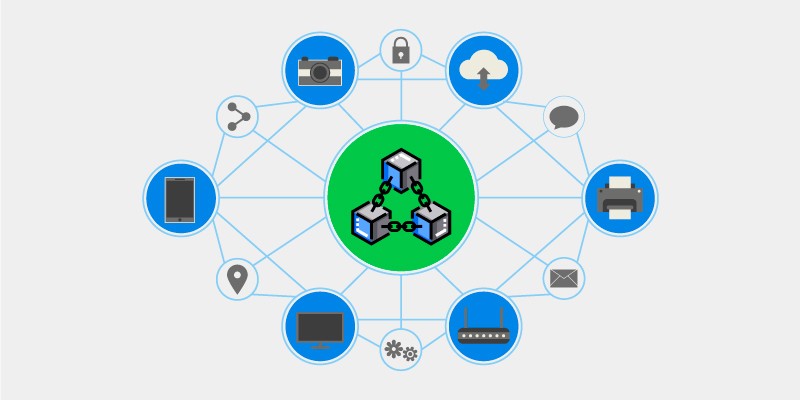
Blockchain solves the issue by decentralising decision-making to an IoT device network that operates on consensus. When developing the architecture for IoT devices that work with blockchain, six primary difficulties are as follows:
1. Scalability
Scalability is one of the common problems in IoT development. How can one manage the massive amounts of data gathered by a vast network of sensors and minimise transaction processing latencies? Now, that is a fundamental question. It is easier to launch the product successfully if a transparent data model has been defined until then.
2. Security Hazards
To increase the capabilities of an IoT-powered blockchain system, you have to use smart contracts, which can boost productivity by automating contract management. This can result in security concerns that lead to stopping blockchain adoption in IoT.
While challenging to attack, Decentralised public blockchain networks can glitch intelligent contracts. And hackers try to find common flaws in smart contracts.
You must carefully study and test smart contracts to prevent this issue. While there is no way to guarantee that your smart contracts won’t have flaws, you can lower the likelihood that they will cause problems for your blockchain and IoT architecture.
3. Reliable Sensors
To what extent the used sensors are reliable? These can prevent the proper assessment of the criteria necessary for a transaction. It is crucial to take precautions to ensure that outside influences do not change sensors and that you can establish a secure environment for data recording and transactions.
4. Transactional Privacy And Network Confidentiality
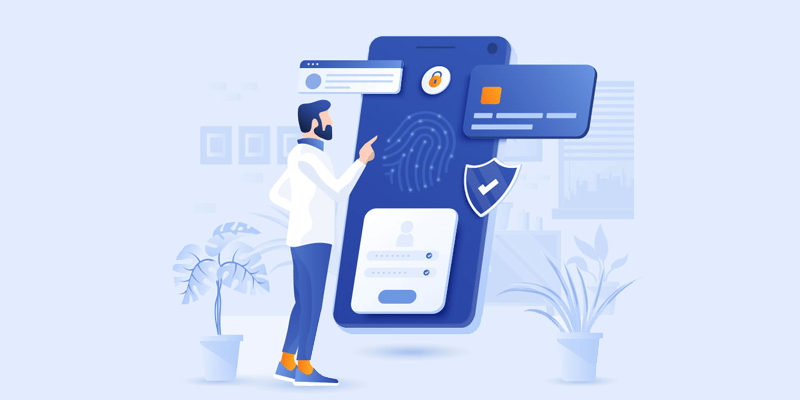
On the public blockchain, you can’t view the transactions history in the shared digital ledger of an IoT devices network. This is because the analysis of transaction patterns is used to figure out who the user or device is behind a public key.
Businesses must look into their privacy demands to see if private or hybrid blockchains could better suit their purposes and act accordingly.
5. Required Time And Computing Resources
Blockchain must use the “Proof of Work” (POW) consensus mechanism if IoT is to achieve the highest level of security. The procedure is straightforward. Yet, it requires a lot of quick, repetitive number-crunching for more extended periods. As a result, computationally demanding processes and related costs serve as a warning to cybercriminals.
6. Complex Blockchain And IoT Projects
As a relatively new technology, blockchain cannot integrate with IoT solutions as quickly as possible. This is so that they may both have experts who are knowledgeable and skilled enough to deal with any situation. Finding top expertise in this field can be complicated, which will always impact the projects.
Conclusion
In conclusion, new technologies like blockchain and the IoT have a lot of potential, but they still need to be widely used because of technical and security problems.
Even though there are problems with every new technology, using blockchain in IoT ecosystems can make a massive difference in efficiency and productivity. The technology will take some time to develop and spread. But as time passes, more people, groups, and communities will want to jump on board.
Sky Potentials UK, the top blockchain app development company, is already working on use cases that combine the two technologies to reduce security risks and related business worries. Make a secure connection with them for this to happen in your IoT business.













































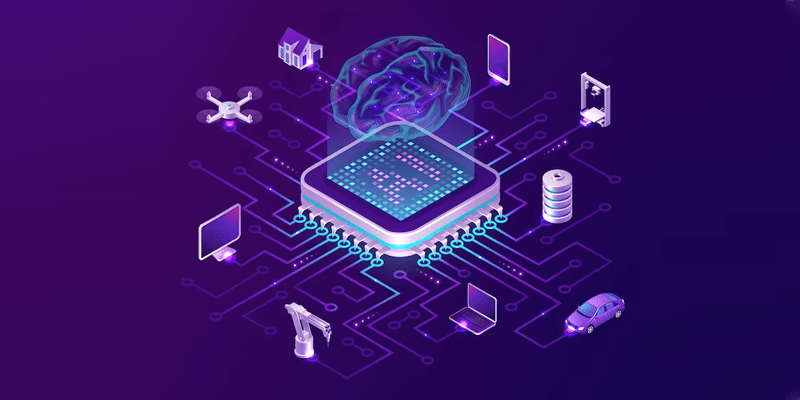






Leave a Reply